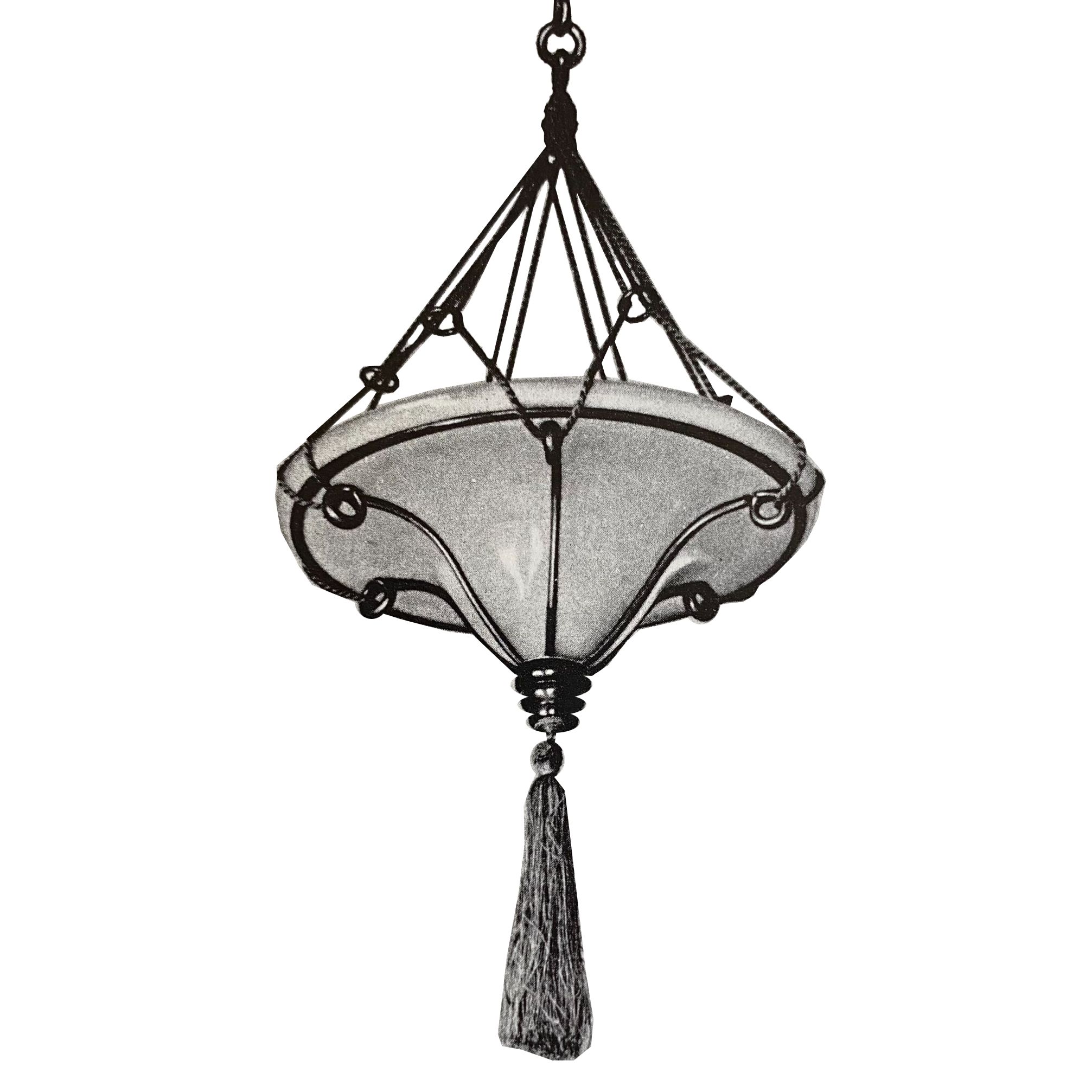Maurice Dufrène

(1876-1955)
After his Art Nouveau phase, Maurice Dufrène took over a professorship at the Ecole Boulle de Paris in 1912. In 1921 he founded the Atelier La Maîtrise, which was affiliated with the Galerie Lafayette. There, designers designed all the objects that contributed to the beautification of an interior: ceramics, stoneware, faience, damasks, furniture and fittings of all kinds. Dufrène had initiated his employees into the conception and all the details of his work, because he himself was so busy with administrative work so busy that he found less and less time to sit at the drawing table. Before founding his studio, Dufrène had designed lamps in the 1920s on gilded or cast bases with shades of reticulated silk and taffeta, to which silk tassels and soapstone rings were attached. He used silk for the lampshades because, he felt, it matched the translucent effect of the glass shades and because glass was difficult to obtain after the war. As director, he later mostly delegated the design work to other artists, such as Adnet, Chevalier, Pouchol, Bodio Englinger, and also to the companies Labadio and La Compagnie des Arts Français. For example, he entrusted Jacques Adnet with the design of extremely modern, functionalist lighting fixtures; on the other hand, he also had the conventional and unpretentious work of Bodio, who primarily designed fabric shades, at his disposal. Dufrène also came up with indirect forms of lighting such as light strips, long light strips or stepped glass ceilings.
Source: Alastair Duncan, Lampen Lüster Leuchter, Jugendstil Art Déco, Prestel-Verlag, München 1979, p. 168.


-
RSA Antiquitäten Wiesbaden
-
Taunusstraße 34
65183 Wiesbaden -
+49 611 5 29 05 70
-
+49 170 7 83 01 13
-
info@antiquitaeten-wiesbaden.de
-
Mondayclosed
-
Tuesday - Friday12 a.m. - 6 p.m.
-
Saturday10 a.m. - 4 p.m.